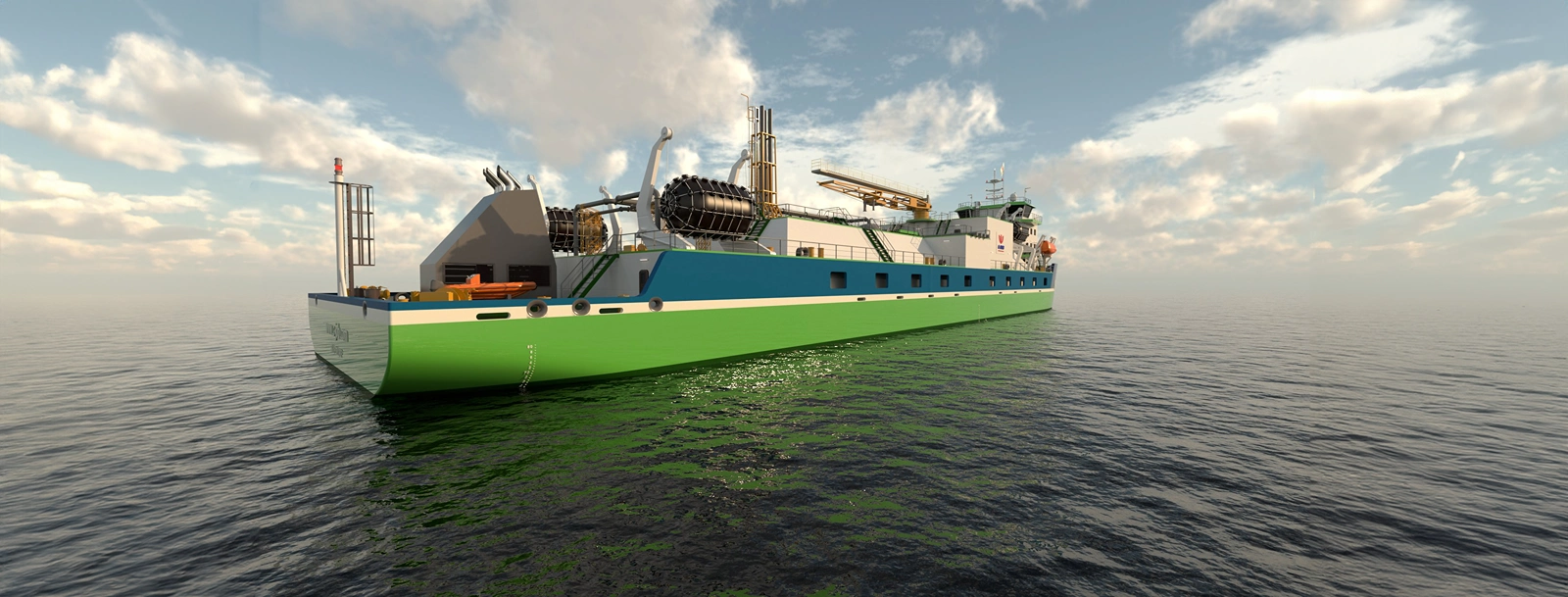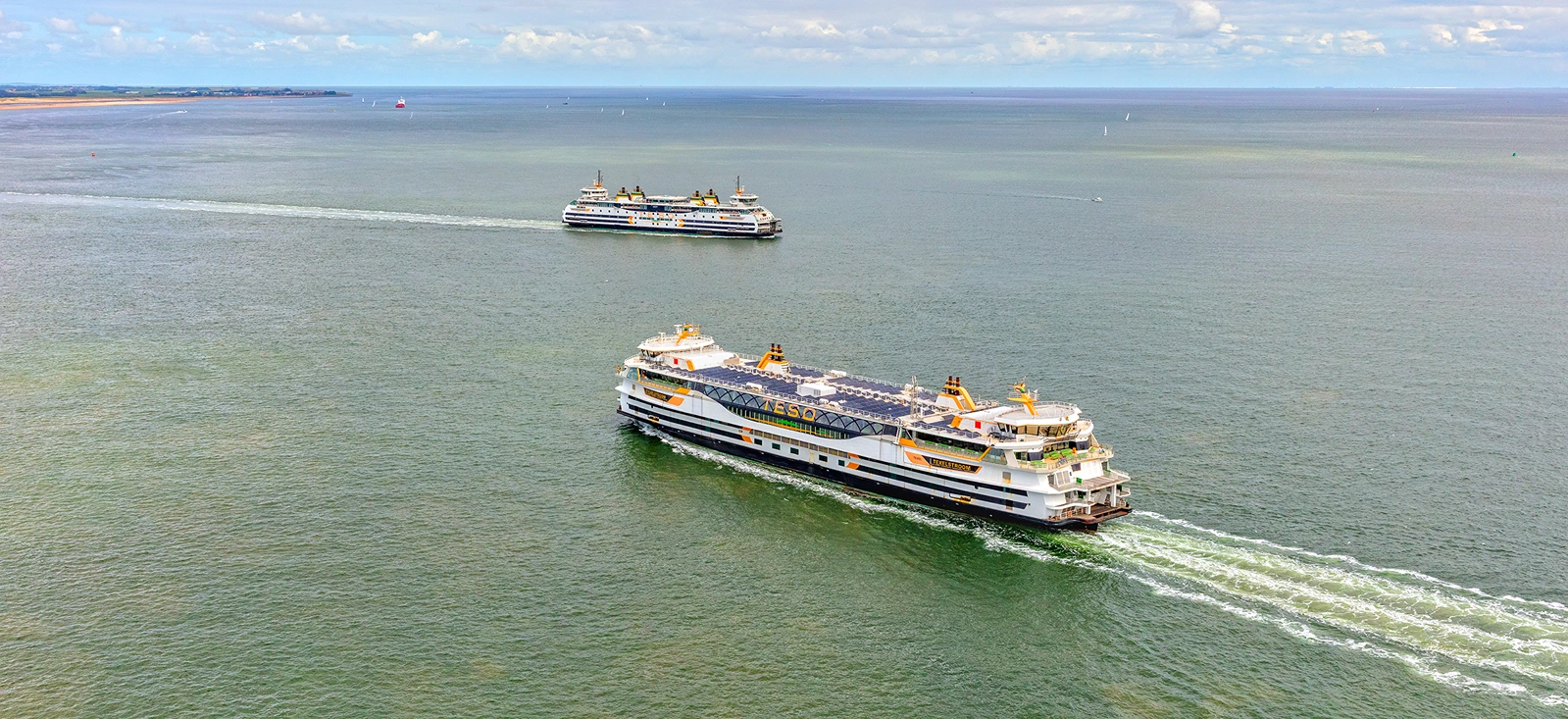Liquified natural gas (LNG)
Renewable LNG can suit a wide range of vessels, in particular those which are already using fossil LNG, such as short sea passenger vessels
These ships can transition to bio-methane and e-methane fuels, and see a reduction of tank-to-propeller GHG emissions of more than 80%. Dual-fuel engines are already proven in operational environments, with well-developed rules and regulations.
To achieve the full potential of reducing GHG emissions with renewable LNG, methane slip – whereby gaseous methane escapes into the atmosphere – needs to be addressed both onshore (in the fuel production process) and on the ship (in the engine).
Discover more

LNG bunker vessel

Orion – for DEME

Texelstroom – for TESO
More about C-Job
Our R&D work has contributed to a ripple effect, as the impact of our vessel designs and technical solutions continues to spread. Discover how we are empowering clients to build better ships, as we propel the maritime industry towards a more sustainable future.